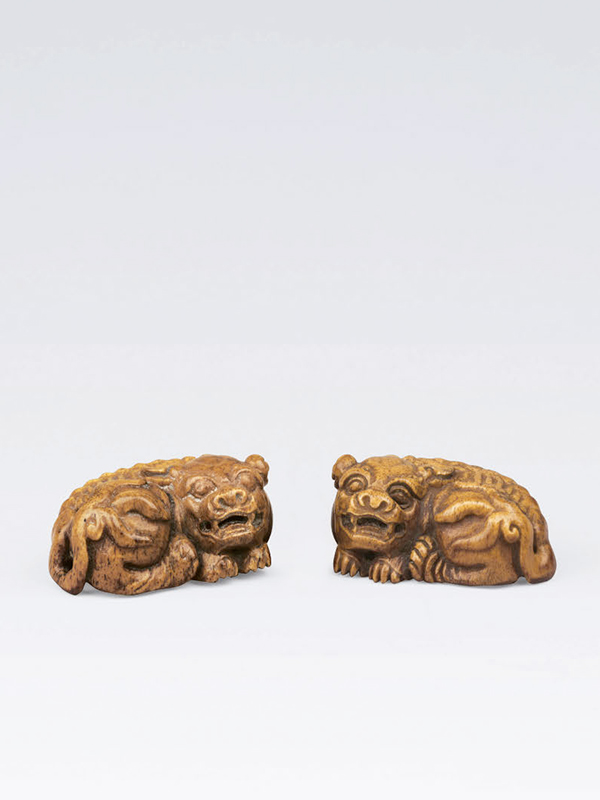Two horn lions
Qing dynasty, 18th or 19th century
Two miniature sculptures in horn, each in the form of a recumbent lion. The animals turn their heads toward the side of their body, with ears folded down, the four arched legs tucked under the body and the paws resting flat on the ground. The bulging eyes, strong jaw, and wavy mane are carved in detail. The tail is curled around the hind quarters. The animals are well polished and the material is of amber colour, with some darker patina.
Lions (shi in Chinese) were not indigenous to China, but were sent to the Han court by emissaries from Central Asia and Persia as tribute gifts via the Silk Road as early as 87 AD. They later became known as ‘protectors of Buddhism‘ and were associated with royalty.1 The majestic stone or bronze lions guarding the entrances to official buildings and residences in China are usually depicted in pairs.2 Miniature carvings fall into the category of objects whose main role is simply as a scholar’s trinket, a precious little item to have around, play with, carry about and, if occasion demands, pressed into service as a paperweight.3 Horn carvings, such as the present lions, whose material probably is antler or moose horn, could be used for snuff bottles or scholar’s objects, but are rarely seen in such miniature sculpture form. An antler horn brush rest inscribed with an imperial poem by the Qianlong emperor and dated to 1751 is in the collection of the National Palace Museum, Taipei.4
- Bjaaland Welch, P., Chinese Art: A Guide to Motifs and Visual lmagery, Tuttle Publishing, Hong Kong, 2008, p. 135
- Ibid. p. 136
- Moss, H and Tsang. G., Arts from the Scholar’s Studio, Oriental Ceramic Society, Hong Kong. 1986, p. 270
- The National Palace Museum, Taipei online collection archive, no. 138

